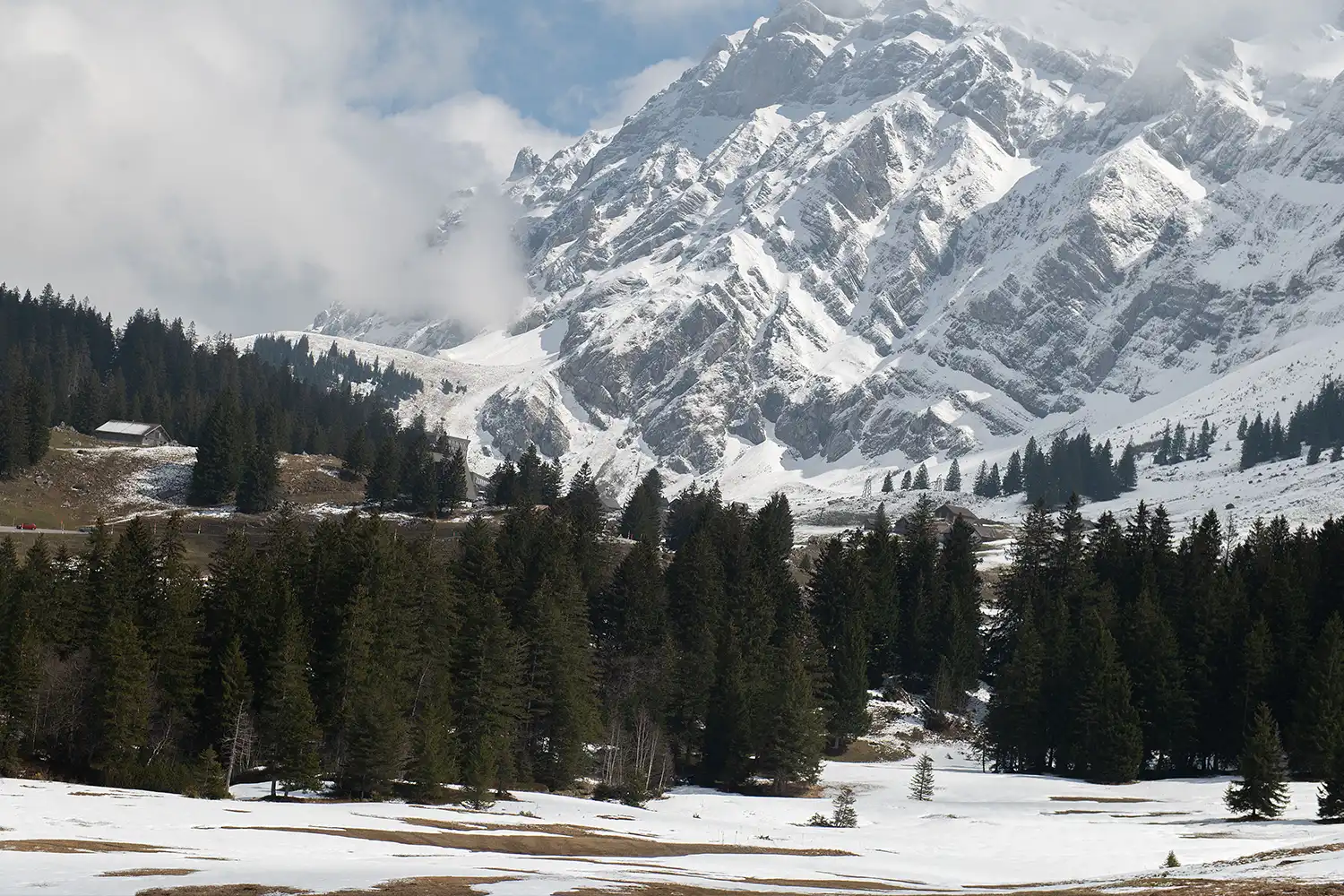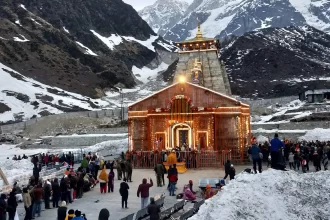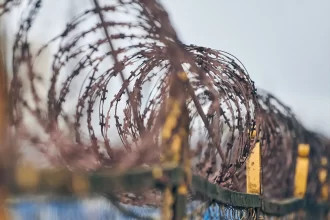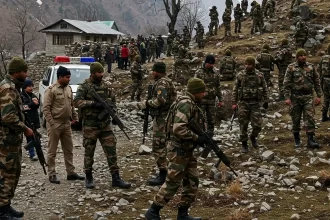Pahalgam, or the “Valley of Shepherds” is Jammu and Kashmir’s finest tourist spot, attracting millions with its green meadows, flowing rivers, and snow-capped Himalayan peaks. In 2025, Pahalgam is still a hub of nature’s beauty and cultural richness, but recent occurrences and environmental issues have brought challenges to its booming tourism industry.
Why Pahalgam is a Tourist Magnet
Pahalgam in the Anantnag district is famous for its peaceful beauty and serenity. Located at an elevation of 7,200 feet above sea level, Pahalgam is a perfect getaway from the city life, with destinations such as Betaab Valley, Aru Valley, and Lidder River providing a retreat to nature enthusiasts and adventure sportspersons. The town serves as a staging post for the Amarnath Yatra, one of the holiest pilgrimages that attracts tourists in July and August. In 2024, Jammu and Kashmir welcomed more than 23 million tourists and Pahalgam also got a significant portion of them, particularly in spring and summer when its grasslands are carpeted with beautiful wildflowers.
The charm of Pahalgam is the mix of adventure and tranquillity. There are trekking, pony rides, river rafting, and camping activities for visitors, with others finding refuge in its serene valleys. Commercial bazaars in the town, selling Kashmir handicrafts and saffron, add a cultural flavor to it, making Pahalgam a travel destination in 2025.
Recent Challenges to Pahalgam’s Tourism
Pahalgam was also severely affected in April 2025 by a ghastly terror attack on the picturesque Baisaran Meadow, a favorite destination 6 km from Pahalgam town. The most lethal terror attack in which at least 26 individuals, including tourists from Maharashtra, Gujarat, and Odisha, and two foreign nationals, were murdered was the most lethal terror attack in Kashmir since the 2019 Pulwama bomb blast. The attack, which was claimed by Lashkar-e-Taiba splinter group, The Resistance Front, led to mass hotel cancellations and flight cancellations, as tourists fled en masse from Pahalgam and other places like Srinagar.
The assault coincided with the flashfloods and landslides that had shut down the Jammu-Srinagar highway, leaving thousands of tourists stranded. Punjab and Kashmir tour operators faced higher cancellations, with some groups going ahead and canceling till June, out of fear of safety. The move, far from the idyllic tourist spot picture of Pahalgam, has rung alarm bells over security, eroding the economic mainstay of the region, which is tourism-based.
Government and Local Response
Jammu and Kashmir government and Indian government were quick to respond to the Pahalgam crisis. J&K Police and Indian Army launched a search operation at Baisaran to identify the attackers, and ponies and helicopters transported the injured. Prime Minister Narendra Modi shortened his visit to Saudi Arabia to meet the challenge, receiving National Security Advisor Ajit Doval and External Affairs Minister S Jaishankar during this time. Home Minister Amit Shah went to Srinagar to assess security, a sign towards firm action.
Locals in Pahalgam, whose livelihood is tourism, organized candle marches in Srinagar, Baramulla, and elsewhere, chanting slogans such as “tourists are our life” to protest against the attack and express solidarity. The J&K Tourism Department also initiated helplines (8899931010, 9596777669) to assist stranded tourists, and Air India and IndiGo flew additional flights from Srinagar to Delhi and Mumbai to evacuate more easily. These initiatives will attempt to restore the confidence of Pahalgam’s tourism sector once again.
Environmental Issues in Pahalgam
Apart from security issues, Pahalgam is confronted with environmental pressure in the form of over-tourism and global warming. Over-tourism has caused immense pressure on local resources, and tourist waste is left behind at places like Betaab Valley and Aru Valley. Illicit construction of hotels and guesthouses along the Lidder River has instilled concerns about environmental degradation. Local authorities implemented stricter waste management and vehicle control regulations in 2025 to maintain Pahalgam’s unspoiled environment. Climate change also impacted snowfall patterns, which in turn impacted winter sports activities such as skiing in Aru Valley.
Locally-initiated and NGO-induced youth clean-up drives are underway in maintaining Pahalgam’s natural beauty unscathed. Environment-friendly initiatives on the tourist’s part, e.g., boycott of plastic or no single use, are promoting tourism in an eco-friendly way.
Pahalgam Top Places to See
Despite all that, its ills Pahalgam still has places so irresistibly to human nature
- Betaab Valley: Pahalgam’s 15 km-long Betaab Valley, which owes its name to the Bollywood film Betaab, is renowned for Lidder River and grassy views, making it a perfect picnic spot and photo stop.
- Aru Valley: 12 km away from Pahalgam, Aru has trekking trails, camps, and skiing in winters, all amidst pine groves and meadows.
- Baisaran Meadow: “Mini Switzerland,” recently defaced by tragedy, the meadow is still a picturesque destination for pony rides and trekking.
- Lidder River: River rafting and fishing are most suitable for the river that adds thrills to the scenically handsome face of Pahalgam.
- Chandanwari: Base camp of the Amarnath Yatra, 16 km away from Pahalgam, it’s a key to glacial grandeur and pilgrims.
Pahalgam Travel Tips for 2025
To have a safe and cozy journey to Pahalgam, keep in mind the following facts:
- Best Time to Visit: April to June is nice weather and lush green meadows, and September to November is favorable for cold autumn scenes. Winter (December-February) is for snow lovers but check road conditions.
- Safety Precautions: Stay informed regarding security advisories on government websites or local newspapers. Travel in groups and avoid solitary places at night.
- Accommodation: Advance booking of hotels, particularly peak season. Options vary from value guesthouses (₹1,000-2,000/night) to luxury resorts such as Hotel Heevan (₹5,000-10,000/night).
- Permits: Foreign tourists require an Inner Line Permit, which is available online or Srinagar’s tourist information office (₹500-1,000); Indian tourists do not require permits.
- Sustainable Travel: Use refillable water bottles, do not trash the place, and shop locally in order to contribute to the economy of Pahalgam.
The Road Ahead for Pahalgam’s Tourism
The Pahalgam attack certainly bruised tourist confidence, but there’s determination here. The J&K government is trying to ramp up security, with more patrols and checkpoints near tourist spots. Industry stakeholders are launching campaigns highlighting the safety and appeal of Pahalgam, encouraging tourists not to allow fear outshine its beauty. Bollywood and travel blog collaborations, which previously compromised its beauty by filming there, are trying to generate interest once again.
Pahalgam’s tourism sector has bounced back from past challenges, such as the 1990s militancy, and locals remain hopeful. “Pahalgam is our home, and tourists are our family. We’ll ensure it’s safe again,” said a local shopkeeper in a recent ANI interview. With collective efforts, Pahalgam is poised to reclaim its status as a top destination.
Pahalgam’s Timeless Charm
Pahalgam remains a gem in the crown of Jammu and Kashmir, boasting unmatched natural scenery and cultural courtesy. Despite the recent tragedy and pollution, the essence of the valley remains in the strength of its people and the resolve of the government to ensure security. The travel to Pahalgam is not merely reaching a place—it’s more about overcoming an experience, from pony travels across Baisaran to indulging in Kashmiri kahwa along the shores of Lidder River. Take your 2025 vacation in Pahalgam with a sense of prudence, take it to be rest and reminisce over what makes heaven even now continue to enthrall the souls in hearts across the globe.







